Mold and mildew are moisture-loving fungi that can be problematic if left unchecked. While they're often used interchangeably, mildew refers to specific types of fungi, including some molds. Both need moisture, oxygen, and organic matter to thrive, appearing on various surfaces like walls and clothes.
Distinguishing between them matters because they have distinct appearances and health effects. Mildew looks flat and powdery, in shades from gray to brown, while mold appears fuzzy, coming in colors like black, green, or red. Mildew might cause minor respiratory issues, but mold can produce allergens and toxins, triggering allergies and asthma, especially in vulnerable groups.
Preventing their growth involves moisture control, dehumidifiers, fixing leaks, and proper ventilation. Mildew can often be cleaned with disinfectants or bleach, while mold may need professional removal, especially in larger infestations. When cleaning, wear protective gear, remove damaged materials, mist the area to prevent spore spread, and use soapy water, bleach, or disinfectants. Afterward, thoroughly dry the area for at least 48 hours.
For extensive mold infestations exceeding 10 square feet, especially on drywall, studs, subflooring, or HVAC systems, consider professional mold removal services to avoid cross-contamination and ensure safe handling.
What to watch out for
Mold
- Fuzzy, slimy, raised appearance
- Darker shades of black, white, green, or red
- Often confused for dirt
- Procedures for allergens that can trigger allergic reactions and asthma attacks
- Mold has a musty and unpleasant odor. If you detect a strong, earthy smell, it could be mold.
Mildew
- White, gray, or light brown appearance in early forming
- Mildew may produce a distinct, foul odor, but it is generally less musty than the smell associated with mold.
- Flat, powdery, or downy growth on surfaces
- Small dots
- Causes minor respiratory problems like coughing, but is not as invasive or troublesome as mold.
Places Mildew can grow on
Mildew can grown on various surfaces, including bathroom walls, window sills, basements, carpets, clothing, kitchen areas, wooden furniture, books, plants, walls, ceilings, air conditioning systems, and outdoor surfaces. It thrives in damp, warm conditions, making proper ventilation and moisture control crucial for prevention. Regular cleaning and prompt addressing of leaks are essential to avoid mildew growth.
Places Mold can grow
Mold can grow in a variety of places, both indoors and outdoors, under the right conditions. It thrives in environments with moisture, warmth, and organic matter. Common locations for mold growth include bathrooms, kitchens, basements, attics, crawl spaces, closets, HVAC systems, window sills, walls, ceilings, carpeting, outdoor areas, plants, and soil, as well as on wet or water damaged materials. Preventing mold typically involves controlling moisture, maintenance is essential to keep mold at bay and avoid potential health risks and structural damage.
Health and Risk Concerns
- Respiratory Problems: Mold and mildew release tiny spores into the air, which can be inhaled. For some individuals, this can lead to respiratory issues, including coughing, wheezing, throat irritation, and exacerbation of asthma symptoms.
- Allergies: Mold spores are potent allergens. Exposure can trigger llergic reactions, with symptoms such as sneezing, runny or stuffy nose, itchy or watery eyes, and skin rashes.
- Sinus Infections: Prolonged exposure to mold or mildew may increase the risk of sinus infections, especially in individuals with weakened immune systems.
- Irritation: Mold and mildew can irritate the eyes, skin, and mucous membranes, leading to discomfort and potential skin rashes.
- Headaches and Fatigue: Some people report experiencing headaches, fatigue, and general malaise when exposed to mold for extended periods.
- Invasive Infections (Rare): In extremely rare cases, individuals with compromised immune systems may develop serious invasive fungal infections, but this is uncommon in healthy individuals.
- Long-Term Health Effects: While research is ongoing, some studies suggest that chronic exposure to mold and mildew may be linked to more severe health issues over time.
It's important to note that the severity of health risks can vary depending on factors like the type of mold or mildew, the extent of exposure, individual sensitivities, and pre-existing health conditions. Vulnerable groups such as children, the elderly, pregnant women, and individuals with respiratory conditions may be more susceptible to mold-related health problems.
To minimize health risks
- Preventive Measures: Control moisture levels in your home to prevent mold and mildew growth.
- Proper Ventilation: Ensure good ventilation in areas prone to dampness.
- Prompt Removal: If you spot mold or mildew, address it promptly to prevent it's spread.
- Use Protective Gear: When cleaning mold or mildew, wear appropriate protective gear like masks, gloves, and goggles.
- Professional Help: For extensive infestations or health concerns, consider consulting professionals in mold remediation.
Taking these precautions can help reduce health risks associated with mold and mildew in your home.
Safely Removing Mold
Safety Gear: Wear an N95 mask, goggles, and gloves.
Isolate: Seal off the area with plastic sheeting and tape.
Ventilate: Open windows and use fans for airflow.
Moisten Mold: Lightly mist moldy surface before cleaning.
Choose Cleaning Solution: Use mold cleaner, water and detergent, or a bleach solution (1 part bleach to 10 parts water)
Scrub Gently: Use a brush, sponge, or pad to remove mold.
Rinse and Dry: Rinse with water and thoroughly dry; use fans and dehumidifiers.
Dispose of Porous Materials: Remove and seal moldy materials like drywall in plastic bags.
HEPA Vacuum: Use a HEPA vacuum to capture any remaining spores.
Inspect and Repeat: Ensure all mold is gone; repeat cleaning if needed.
Preventive Steps: Address moisture sources and fix leaks.
Monitor: Keep an eye on the area to prevent mold's return.
For extensive mold or uncertainty, consult professional mold remediation experts for safe and effective removal.
Safely Removing Mildew
Protect Yourself: Wear gloves, eye protection, and a mask.
Ventilate: Open windows and use fans for better airflow.
Mix a Solution: Blend equal parts white vinegar and water or use a mildew cleaner.
Apply Solution: Use a brush or sponge to apply the solution to mildew.
Gently Scrub: Softly scrub the affected area, especially grout lines.
Rinse: Thoroughly rinse with water to remove residue.
Dry: Dry surfaces completely to prevent mildew's return.
Dispose: Properly dispose of cleaning materials.
Prevent: Address the moisture source and improve ventilation.
Monitor: Keep an eye on the area for any return of mildew.
For extensive mildew or uncertainty, consider professional help for safe and effective removal.

